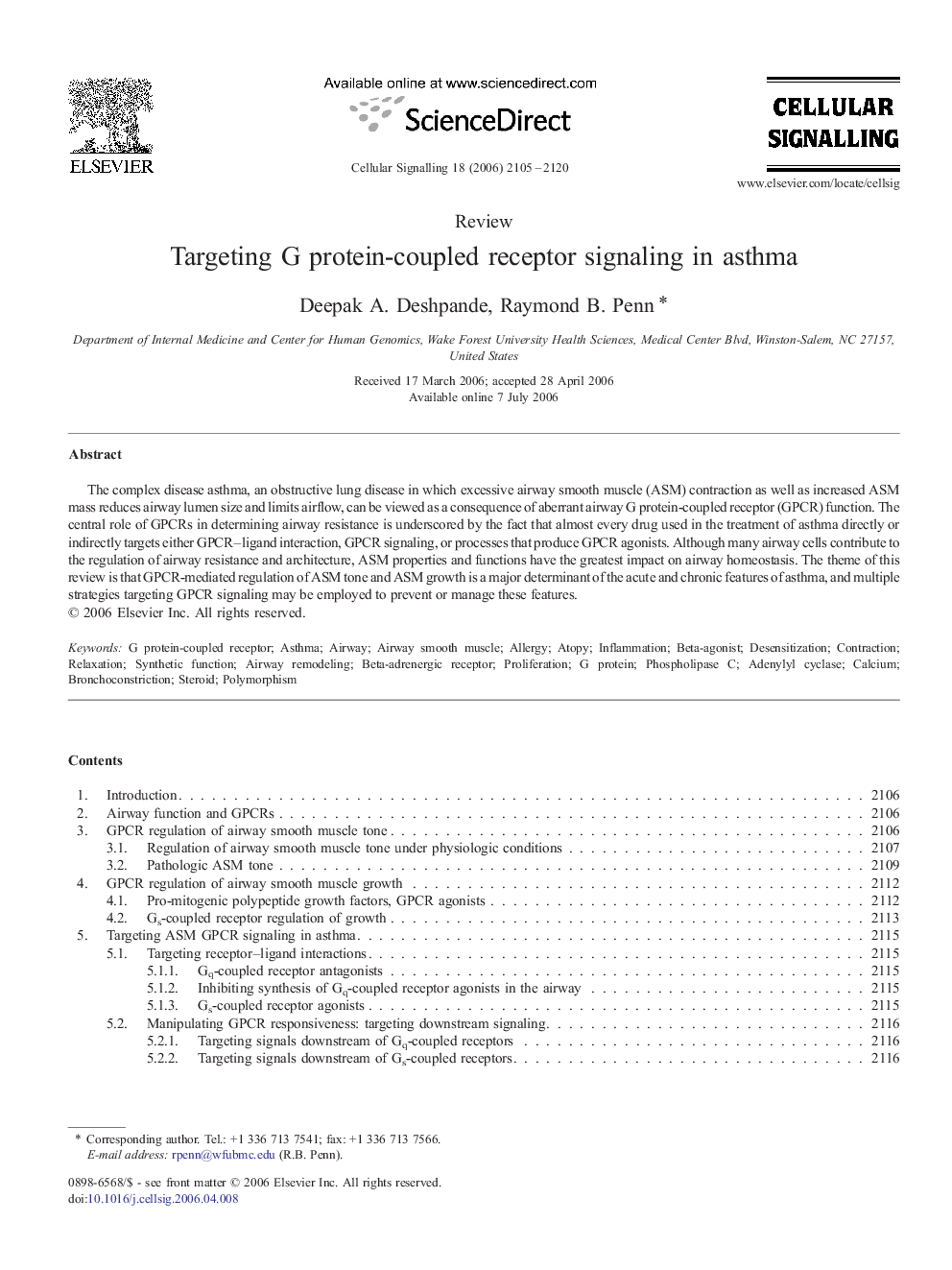| Article ID | Journal | Published Year | Pages | File Type |
|---|---|---|---|---|
| 1964185 | Cellular Signalling | 2006 | 16 Pages |
The complex disease asthma, an obstructive lung disease in which excessive airway smooth muscle (ASM) contraction as well as increased ASM mass reduces airway lumen size and limits airflow, can be viewed as a consequence of aberrant airway G protein-coupled receptor (GPCR) function. The central role of GPCRs in determining airway resistance is underscored by the fact that almost every drug used in the treatment of asthma directly or indirectly targets either GPCR–ligand interaction, GPCR signaling, or processes that produce GPCR agonists. Although many airway cells contribute to the regulation of airway resistance and architecture, ASM properties and functions have the greatest impact on airway homeostasis. The theme of this review is that GPCR-mediated regulation of ASM tone and ASM growth is a major determinant of the acute and chronic features of asthma, and multiple strategies targeting GPCR signaling may be employed to prevent or manage these features.
